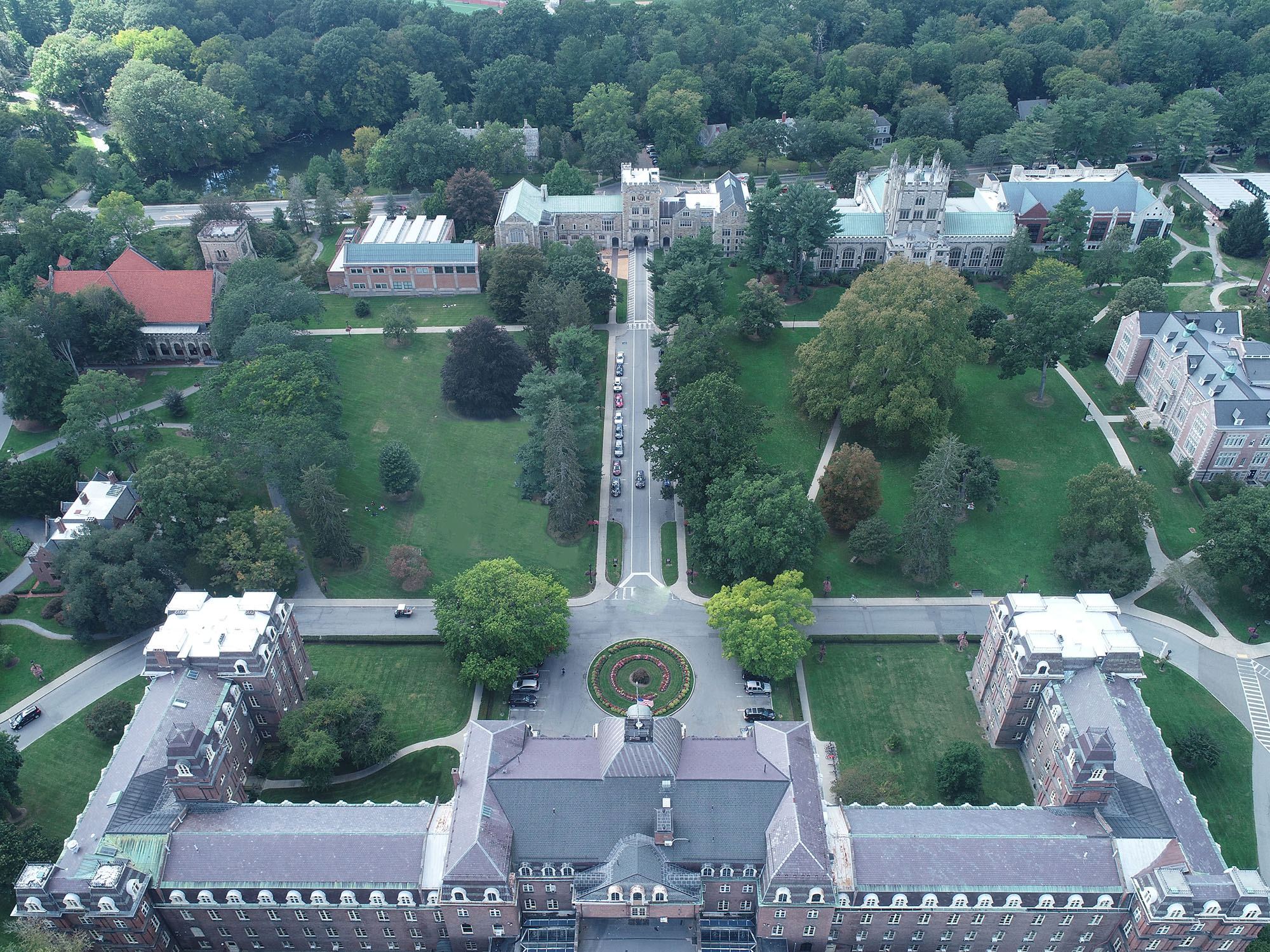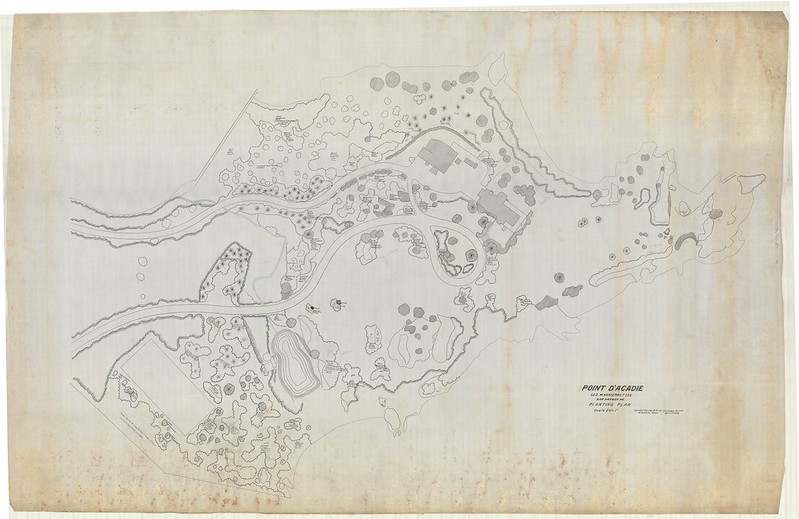
As Laura Wood Roper recounts in her biography, Olmsted’s quip in February 1894 that “Mrs. and Miss Jones . . . who are supposed to be in some way inclined to dabble in Landscape Architecture” was “comically off the mark.” The occasion was the gathering of friends visiting Biltmore. Beatrix Farrand (then Miss Jones) of course went on to have a distinguished career as one of America’s most important landscape architects and a founding member of the ASLA in 1899. Her mother, Mary Cadwalader Jones, was equally serious as a writer, editor, and social reformer.
Four months after visiting Biltmore, on June 5, 1894, Farrand documented her visit to “Mr. Olmsted’s Place” on Warren Street in Brookline, Massachusetts, in her unpublished Book of Gardening: October 1893-May 1895, held in her archives at the University of California at Berkeley. Although she doesn’t say, she was undoubtedly accompanied by Prof. Charles Sprague Sargent who had been overseeing her horticultural education (in 1893 she visited the World’s Columbian Exposition in Chicago with Sargent).
“The entrance is quite charming,” she wrote, “a lych gate covered with Euonymous radicans, both the plain and variegated and quite bushy on top. The road goes around a tiny island with shrubs planted upon a high mound completely shutting out the gate. To the right the ground has been dug away making a little dell. This you get to by five or six rough rock steps and down below is a mass of ferns, Virginia creeper, Rosa multiflora and Japanese honeysuckle running riot over the roses. It is said that the multiflora grows much faster if it is trained upward. Is this true?
The office is interesting. The survey of a piece of ground is taken by the local engineers of the place, marking one foot contour lines and the principal landmarks such as large trees . . . and streams. The sketches are then made freehand over the survey, of course on tracing paper. A card catalogue . . . is very useful with one column saying where it could be found in what condition, that is, size and price, with a separate column for remarks. The planting plans are made first, then are indicated in the sketch as to size and shape, then the plantation takes shape and is filled with the plants he thinks will go best in the soil, exposure, and give the best effect. He marks on the plan the size and shape of the place that the shrubs are to be put in and then labels them, first with the number which corresponds to a number on the edge of the plan, then with another number which tells the number of plants to put in. The scale is usually 20-40-60 feet to the inch.”
In her library at Reef Point, Farrand displayed a portrait of Frederick Law Olmsted alongside her other mentors, André Le Nôtre, Prof. Sargent, and Gertrude Jekyll. Throughout her career she had numerous occasions to advise on or redesign gardens designed by the Olmsted firm, including one of her most famous projects, Oheka, for Otto Kahn.
Judith B Tankard is a landscape historian and the author of Beatrix Farrand: Garden Artist, Landscape Architect (Monacelli Press, 2022) available for pre-order.











